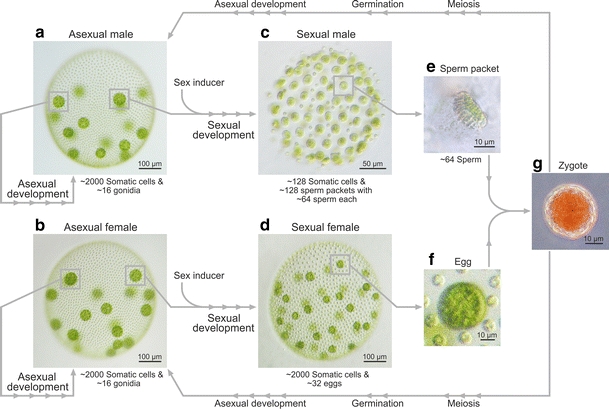Fig. 6.

The switch from asexual to sexual reproduction in V. carteri. Asexual development (see Fig. 5) and the phenotypes of males and females are indistinguishable. a Photomicrograph of an asexual male. b Photomicrograph of an asexual female. When the sex inducer is present, the gonidia of both sexes undergo a modified embryogenesis, which is also different in males and females. c In males, embryonic cleavage divisions (including asymmetric cell division) result in juveniles with somatic cells and sperm packets in a 1:1 ratio. d In females, juveniles with ~32 eggs arise. Mature sperm packets (e) are released and swim around until they contact a sexual female with mature eggs. The sperm packets then break up into individual sperm, and the sperm penetrate the ECM of the female and fertilize the eggs (f). g The resulting diploid zygotes develop an orange coloration and secrete a thick, crenellated cell wall. When the zygote germinates, it undergoes meiosis to produce either a single haploid asexual male or female
